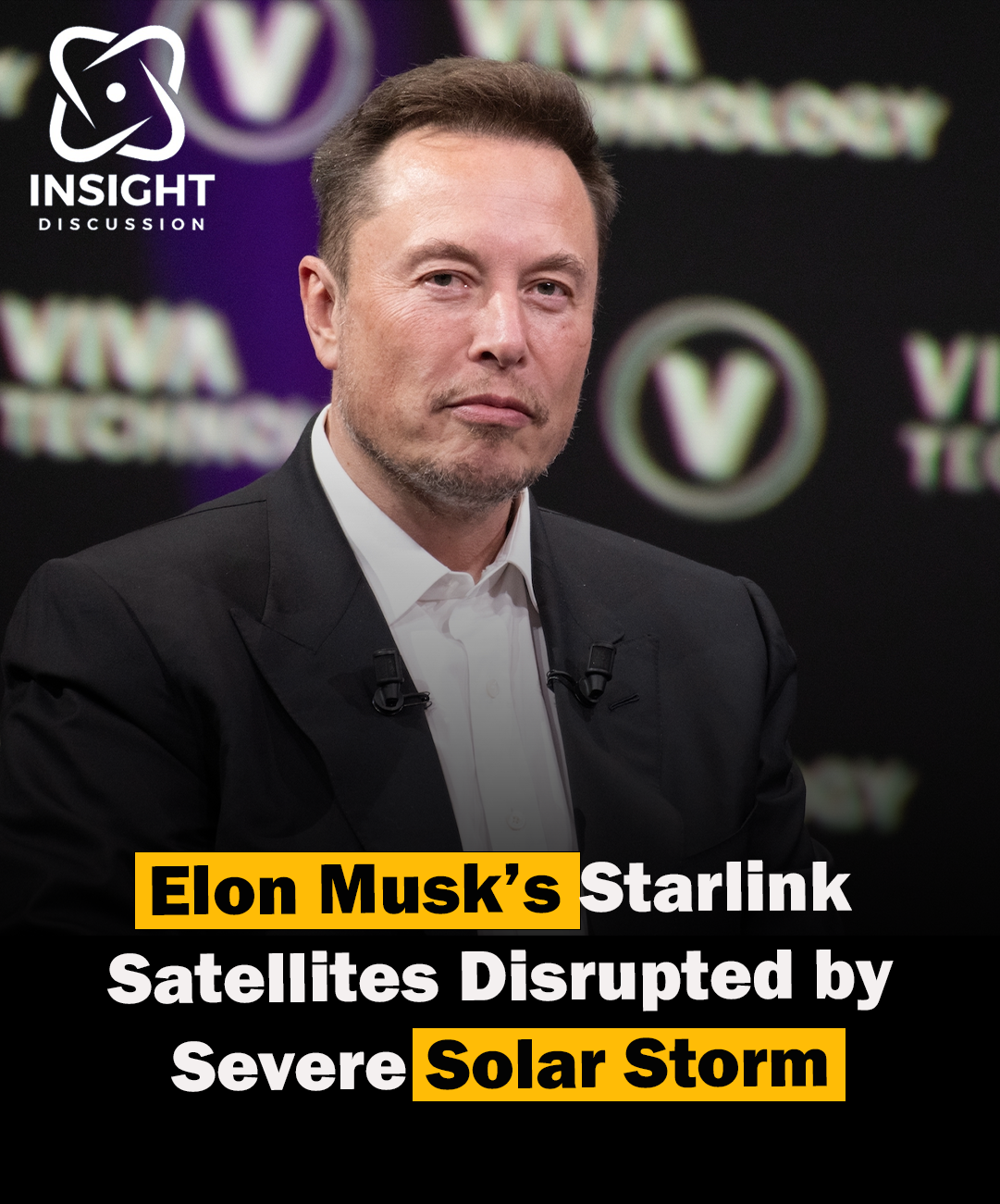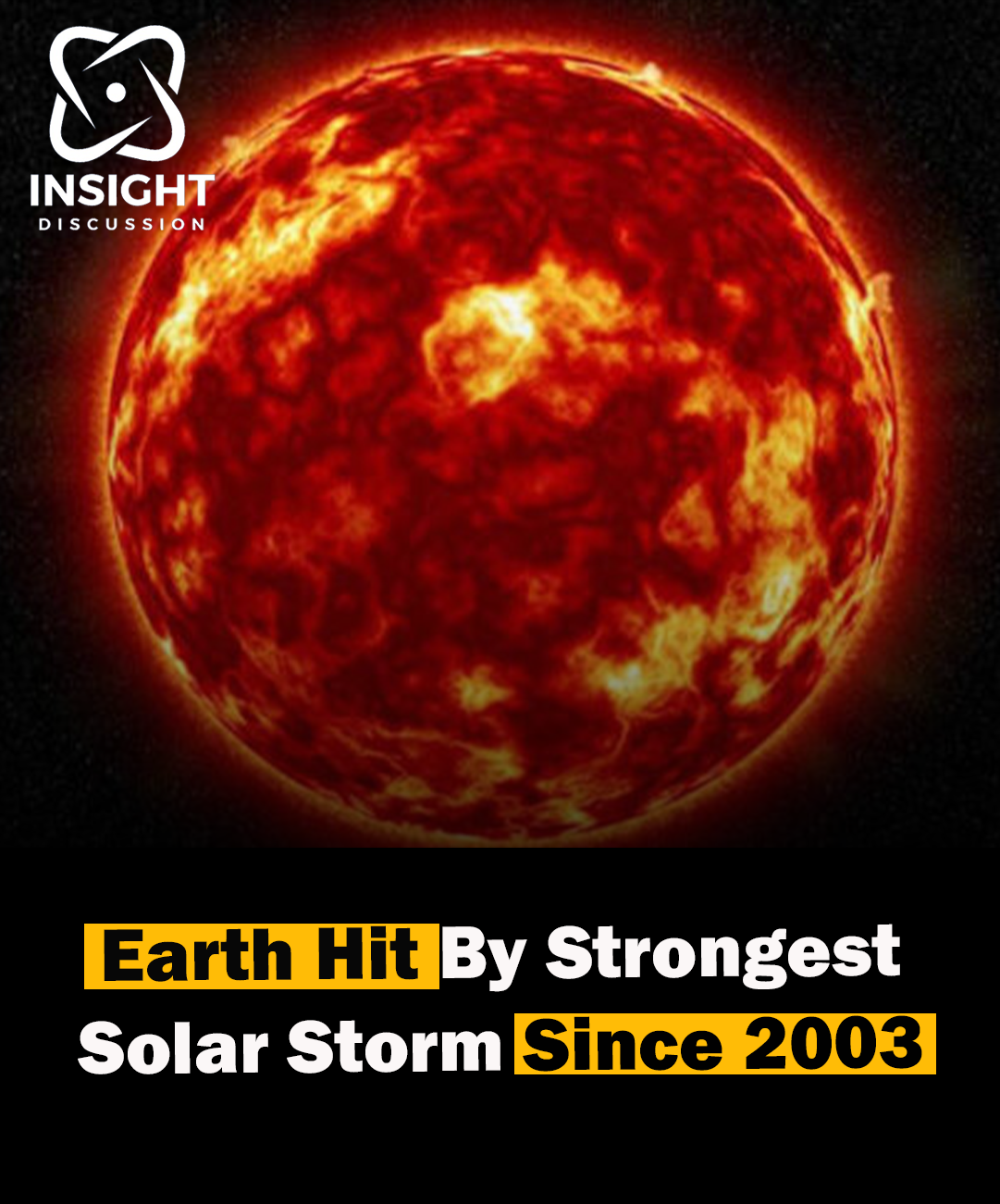Starlink, the satellite division spearheaded by Elon Musk’s SpaceX, issued a cautionary alert on Saturday in response to a “degraded service” status precipitated by Earth’s encounter with its most substantial geomagnetic storm in over two decades, stemming from heightened solar activity. As a dominant player in satellite internet services, Starlink commands approximately 60% of the nearly 7,500 satellites currently orbiting Earth, rendering it a linchpin in global connectivity initiatives. Despite the unprecedented challenges posed by the geomagnetic storm, Elon Musk, in a post on X, assured stakeholders that Starlink satellites were resiliently weathering the storm’s pressures, albeit under strain. However, the US National Oceanic and Atmospheric Administration (NOAA) painted a grim picture, characterizing the ongoing storm as the most formidable since October 2003 and indicating its potential persistence over the weekend. Such forecasts underpin the far-reaching ramifications of geomagnetic disturbances, imperiling navigation systems, power grids, and satellite communications infrastructure worldwide.
Geomagnetic storms, driven by disturbances in Earth’s magnetosphere resulting from fluctuations in solar wind, pose formidable challenges to both terrestrial and satellite-based systems. As charged particles from the Sun interact with Earth’s magnetic field, they precipitate phenomena such as auroras while simultaneously inducing electromagnetic disturbances that reverberate across vast swathes of infrastructure. The current geomagnetic storm, categorized as the most significant in decades, underscores the imperative for robust mitigation measures and heightened vigilance across critical sectors.
Starlink’s acknowledgment of a “degraded service” status underscores the vulnerability of satellite-based communications infrastructure to geomagnetic disturbances. While satellite networks offer unparalleled global coverage and accessibility, they remain susceptible to disruptions induced by space weather events such as geomagnetic storms. The intricate interplay between space-based assets and Earth’s magnetosphere underscores the delicate equilibrium upon which modern telecommunications infrastructure hinges. As such, initiatives aimed at enhancing the resilience of satellite networks to geomagnetic disturbances assume heightened significance in an era characterized by increasing reliance on space-based services.
Elon Musk’s assurance regarding the resilience of Starlink satellites amidst the geomagnetic storm reflects the ongoing efforts to fortify space-based assets against space weather events. The deployment of advanced mitigation strategies, coupled with continuous monitoring and real-time response mechanisms, underscores SpaceX’s commitment to safeguarding the integrity of its satellite constellation. Nevertheless, the intrinsic unpredictability of space weather events underscores the imperative for continuous refinement and adaptation of mitigation strategies to ensure the robustness of satellite networks.
The US National Oceanic and Atmospheric Administration’s characterization of the ongoing geomagnetic storm as the most significant in decades underscores the urgency of preparedness and response efforts. With the potential for widespread disruptions across critical infrastructure sectors, including navigation, power grids, and satellite communications, proactive measures are essential to mitigate the impact of space weather events. Enhanced forecasting capabilities, coupled with timely dissemination of alerts and advisories, play a pivotal role in enabling stakeholders to preemptively address vulnerabilities and minimize the adverse consequences of geomagnetic disturbances.
The current geomagnetic storm serves as a stark reminder of the inherent vulnerability of modern technological infrastructure to space weather events. While significant strides have been made in understanding and mitigating the impact of geomagnetic disturbances, the dynamic nature of space weather presents ongoing challenges. Investments in research, development, and innovation are paramount to advancing our capabilities in forecasting, monitoring, and responding to geomagnetic storms, thereby enhancing the resilience of critical infrastructure and safeguarding against potential disruptions.
In conclusion, Starlink’s warning of service disruption amidst Earth’s most significant geomagnetic storm in decades underscores the far-reaching implications of space weather events on satellite-based communications infrastructure. As a dominant player in the satellite internet services sector, Starlink’s response to the geomagnetic storm highlights the importance of proactive mitigation measures and ongoing investments in resilience-building efforts. While challenges persist, concerted efforts to enhance forecasting capabilities and fortify space-based assets against space weather events are essential to ensuring the reliability and robustness of satellite networks in an era defined by increasing reliance on space-based services.

